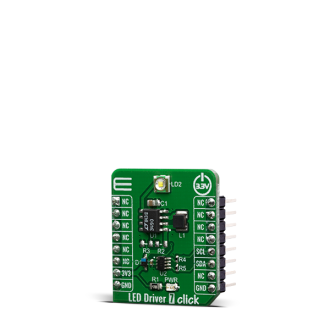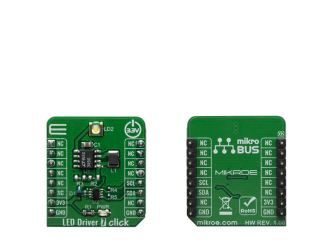
We strongly encourage users to use Package manager for sharing their code on Libstock website, because it boosts your efficiency and leaves the end user with no room for error. [more info]

Rating:
Author: MIKROE
Last Updated: 2020-01-09
Package Version: 1.0.0.0
mikroSDK Library: 1.0.0.0
Category: LED Drivers
Downloaded: 2737 times
Not followed.
License: MIT license
LED Driver 7 click is a Click boardâ„¢ equipped with the LTC3490, single cell 350mA LED driver from Linear Technology.
Do you want to subscribe in order to receive notifications regarding "LED Driver 7 Click" changes.
Do you want to unsubscribe in order to stop receiving notifications regarding "LED Driver 7 Click" changes.
Do you want to report abuse regarding "LED Driver 7 Click".


Library Description
Library provides full control of the LED's illumination. User can change the LED's brightness and apply "One Time Programming" with write function, or check the wiper and OTB bits with read function.
Key functions:
void leddriver7_write ( uint8_t cmd_byte, uint8_t pos ); - Function sets command byte and potentiometer position.uint8_t leddriver7_read ( ); - Function reads single byte of data from output register.Examples description
The application is composed of three sections :
void application_task ( )
{
for ( n_pos = 12; n_pos < pos_num; n_pos++ )
{
leddriver7_write ( LEDDRIVER7_NORM_OP_MODE, n_pos );
ByteToStr( n_pos, test_log );
mikrobus_logWrite( "Position :", _LOG_TEXT );
mikrobus_logWrite( test_log, _LOG_LINE );
Delay_ms( 500 );
}
}
Other mikroE Libraries used in the example:
Additional notes and informations
Depending on the development board you are using, you may need USB UART click, USB UART 2 click or RS232 click to connect to your PC, for development systems with no UART to USB interface available on the board. The terminal available in all MikroElektronika compilers, or any other terminal application of your choice, can be used to read the message.